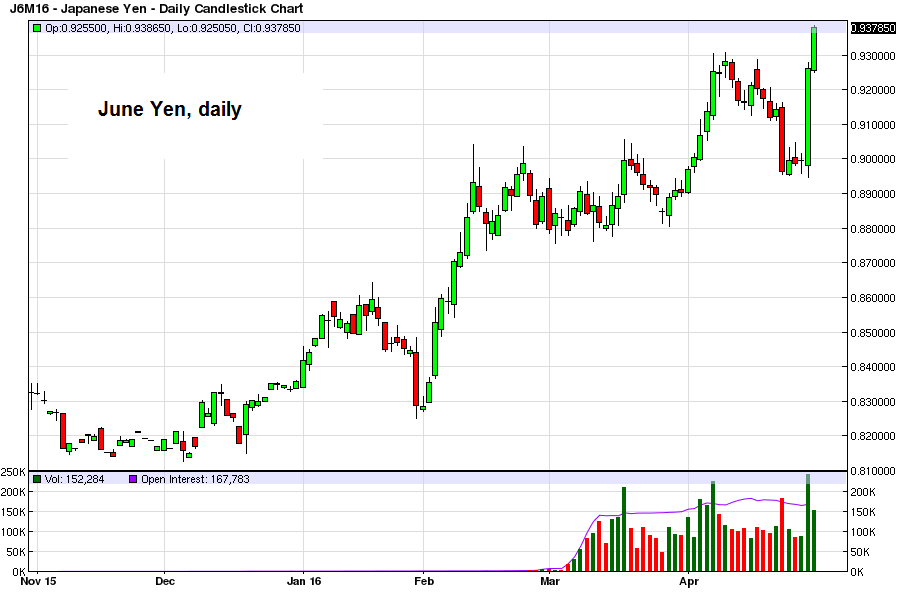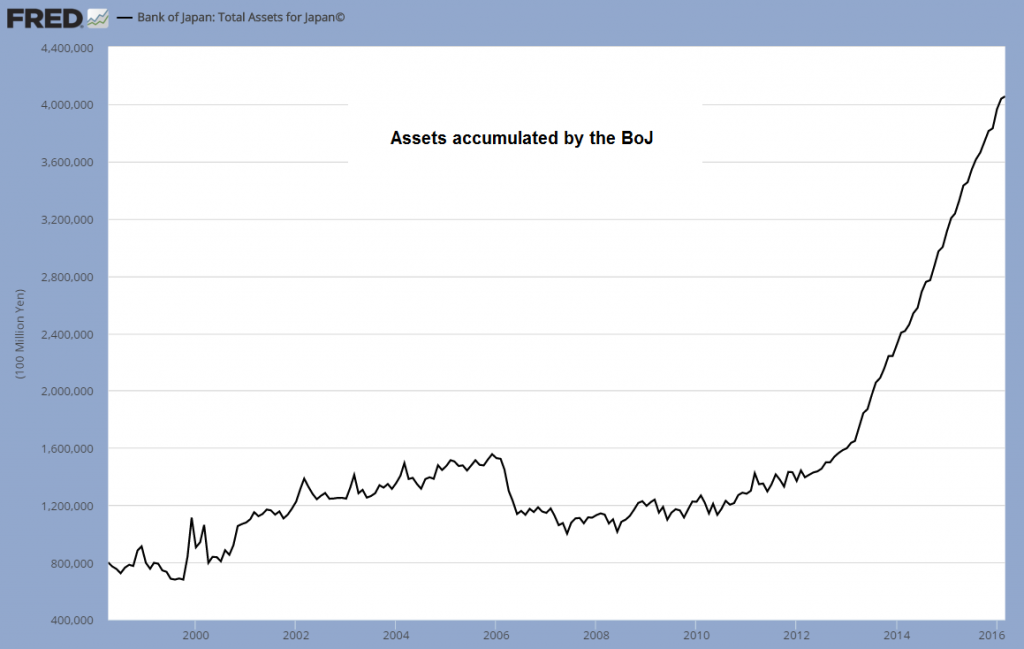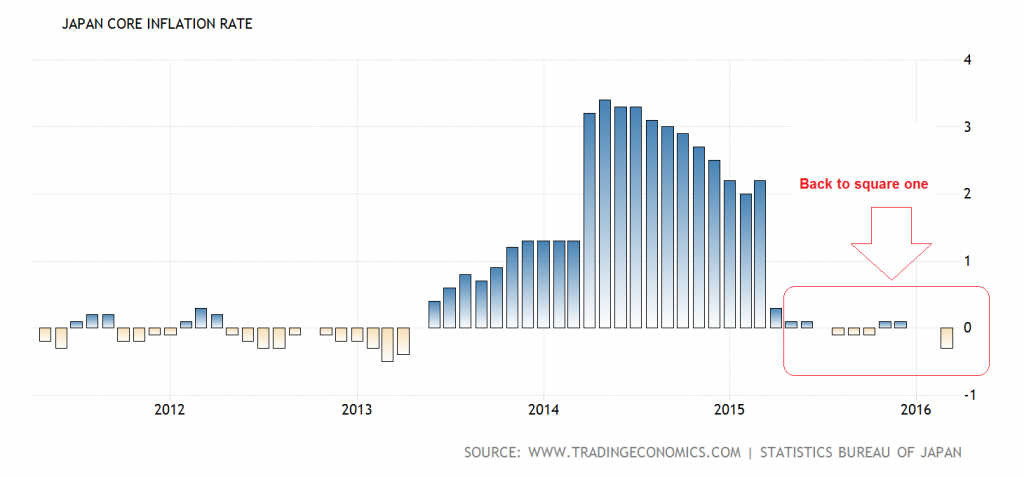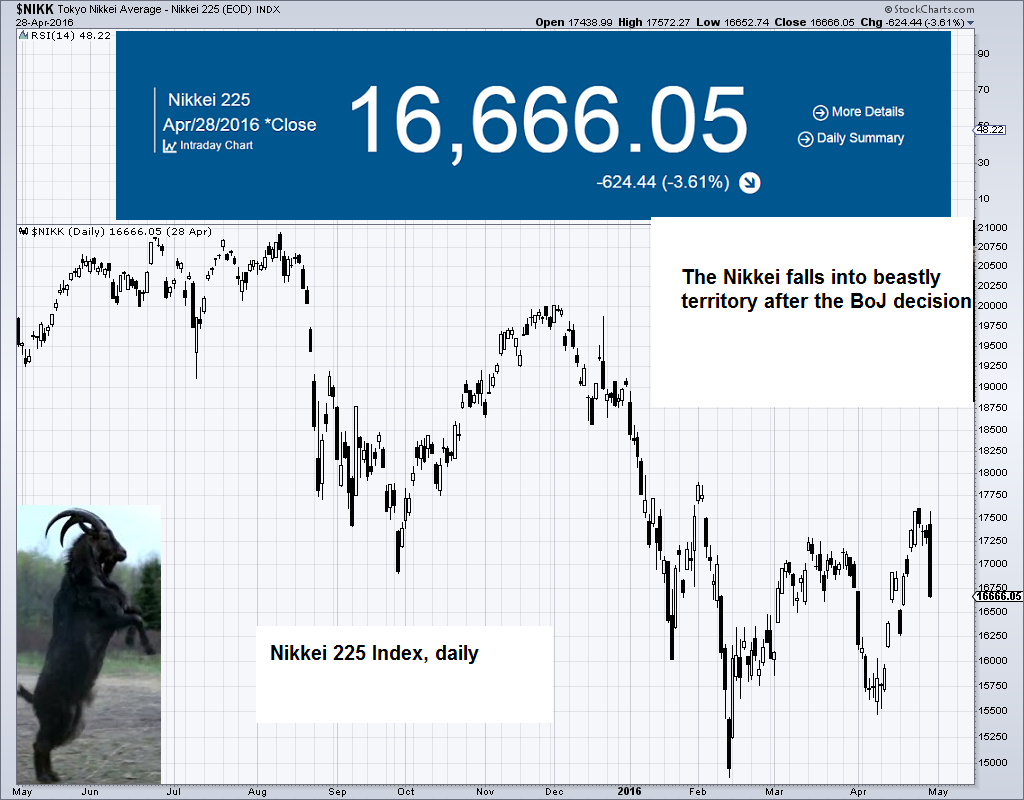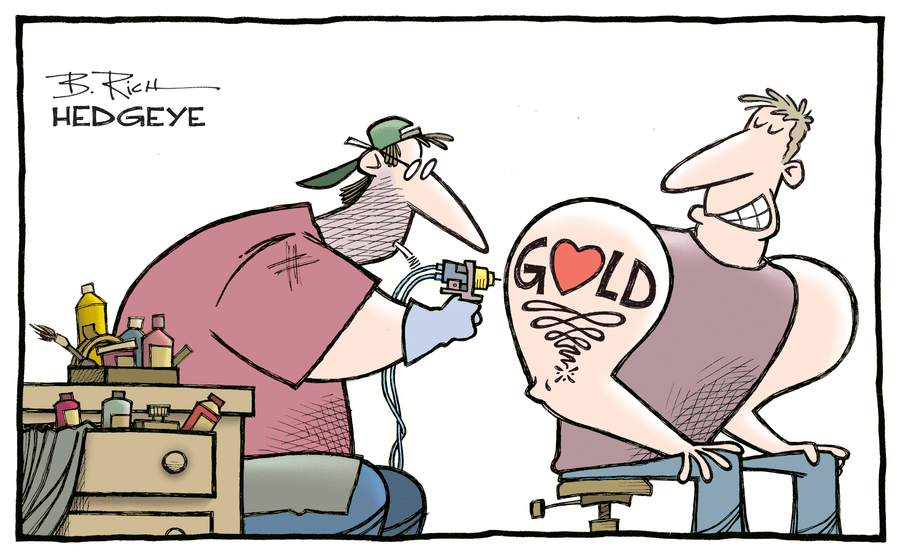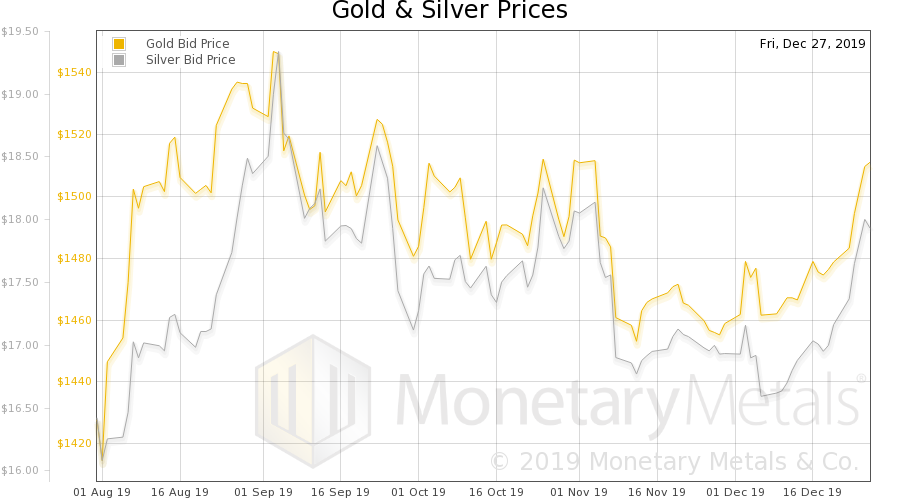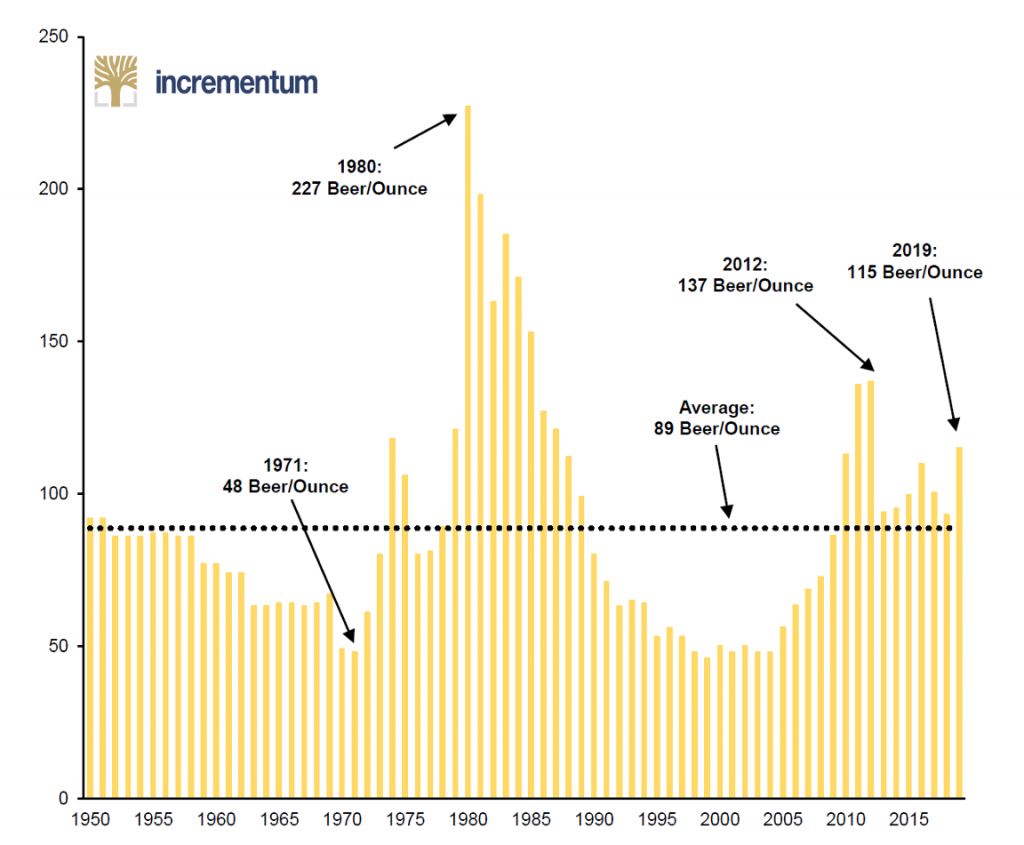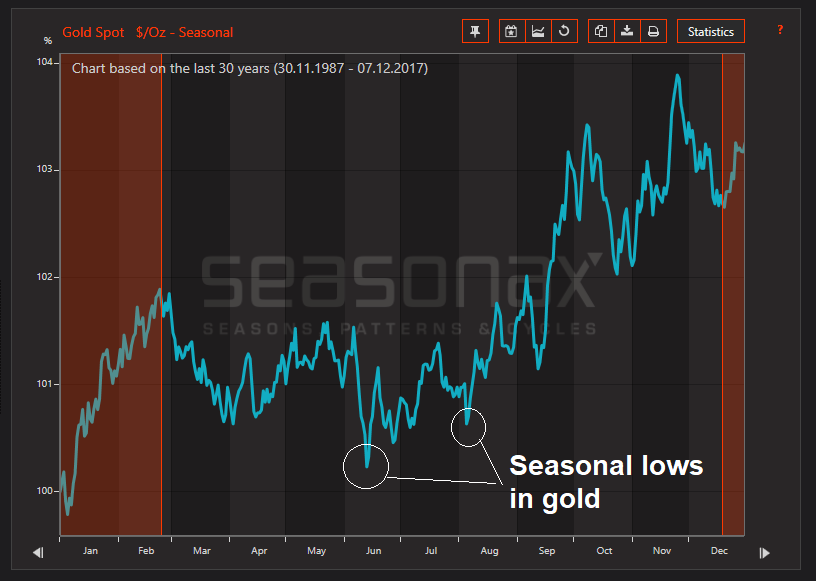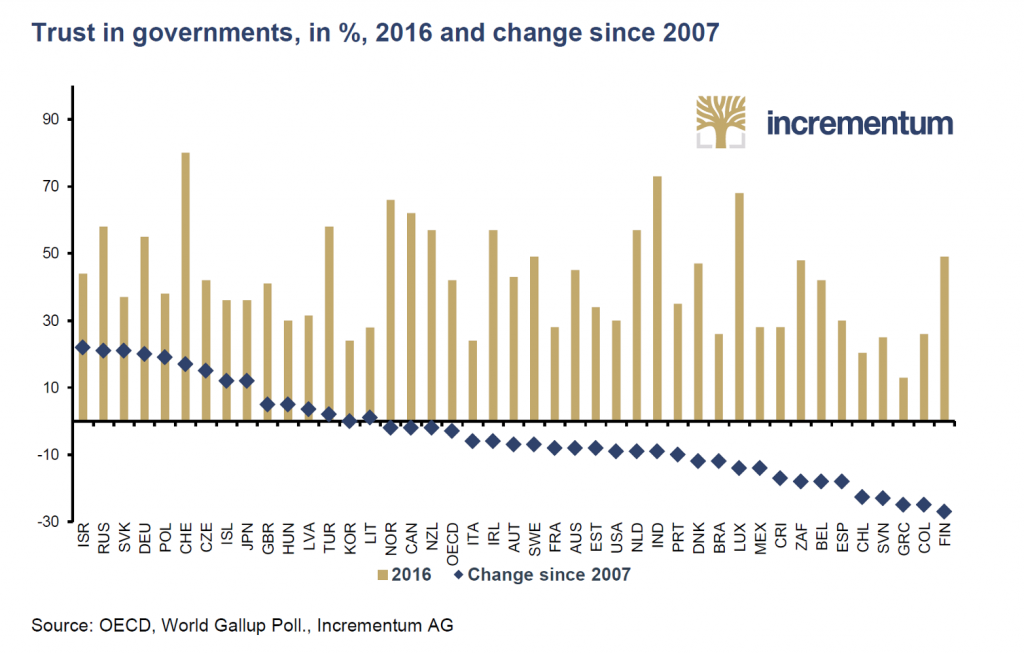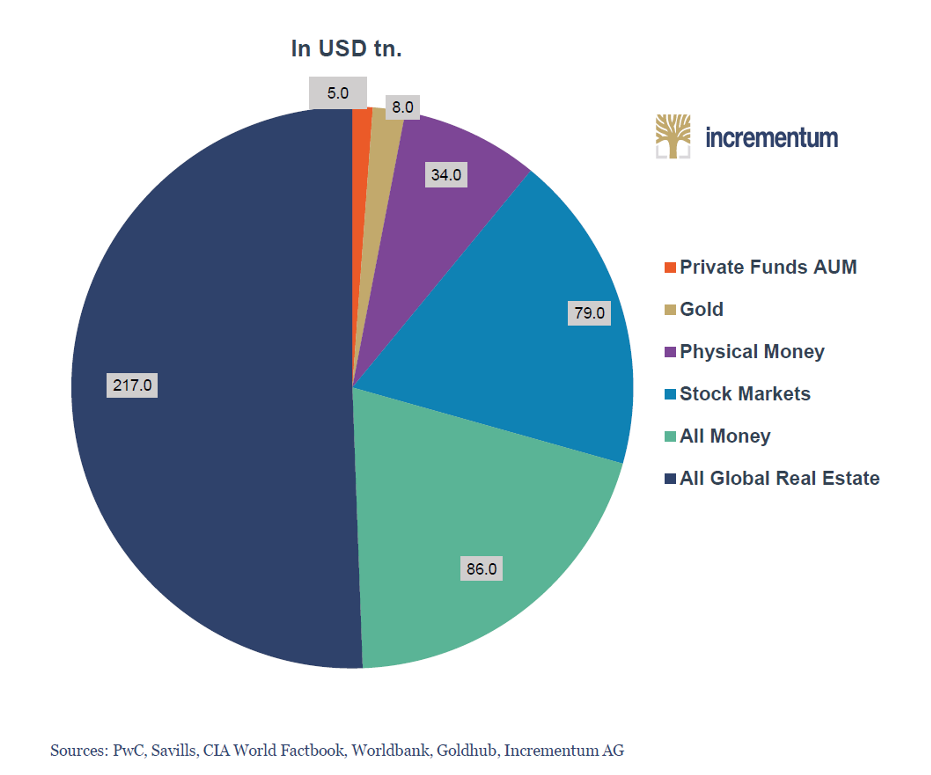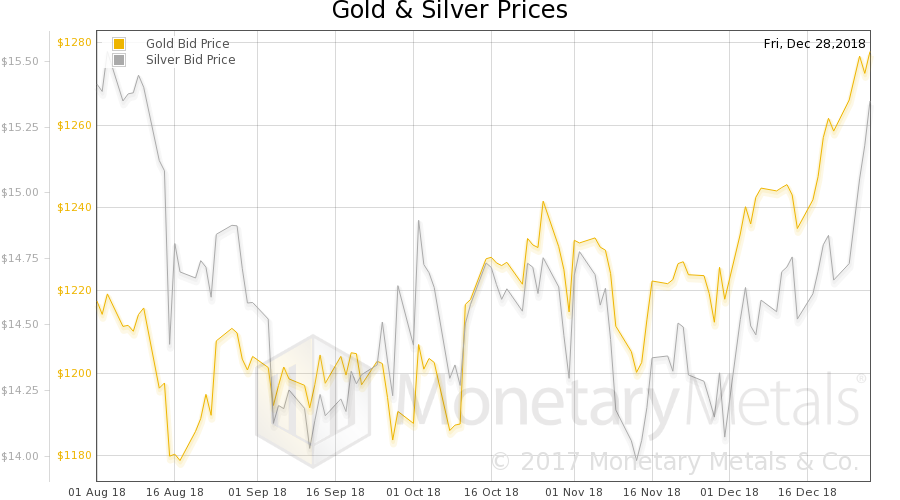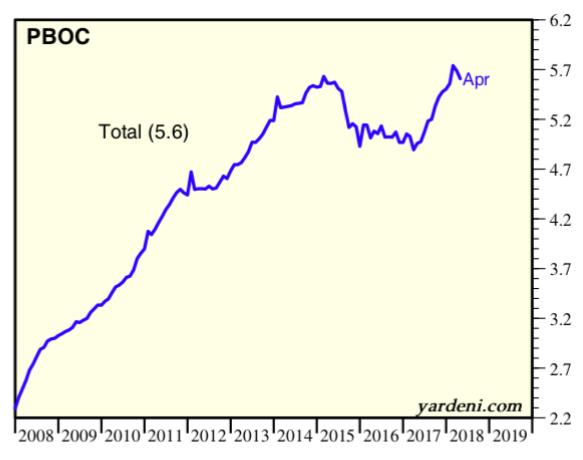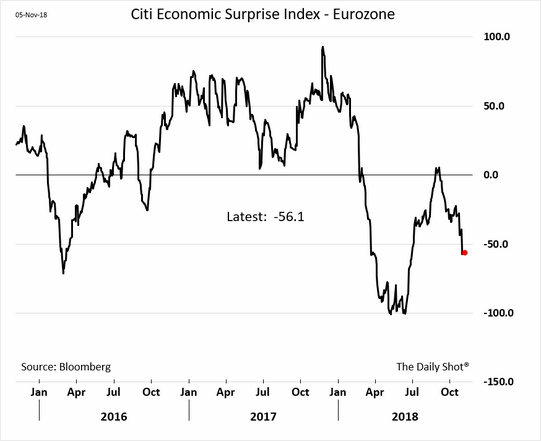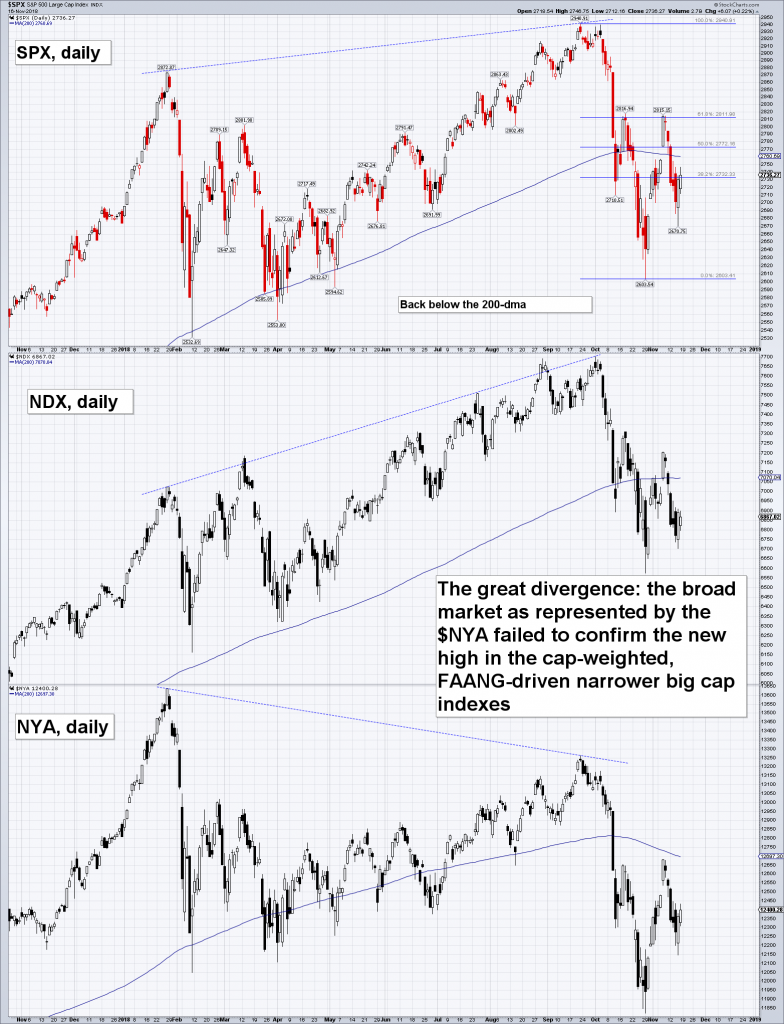Damned If You Do…
After waking up on Thursday, we quickly glanced at the overnight market action in Asia and noticed that the Nikkei had tanked rather noticeably. Our first thought upon seeing this was “must be the yen” – and so it was.
The BoJ cannot manipulate the yen anymore.
June yen futures, daily– taking off again – |
Given the BoJ’s bizarre plan to push consumer price inflation to a 2% annualized rate within [enter movable goal post here] years, Mr. Kuroda cannot be overly happy about that. In fact, lately it seemingly doesn’t matter what he decides to do or not to do – the yen is going up anyway.
Last Thursday he reportedly “disappointed” markets by not expanding the BoJ’s madcap asset purchase program even further. We are not quite sure what people believe could possibly be achieved by making the parabola shown below even more parabolic.
Assets held by the BoJ
Mr. Kuroda’s “QQE” (“quantitative and qualitative easing”) was started in April of 2012. Lately it has however abjectly failed to achieve its stated goal, which is actually a blessing in disguise… |
As far as the yen is concerned, we should point out that the trade-weighted real exchange rate of the yen at one point last year had declined to levels last seen in 1973. Combined with the recent strengthening of its technical condition, there is thus actually a good reason for the market to bid the yen up.
Moreover, in terms of perceptions, there are several issues in play. One is that some sort of sub-rosa agreement may have been struck at or around the G 20 meeting to allow the dollar to depreciate and the yen and euro to rally, so as to indirectly support the yuan, assorted other EM currencies as well as commodities, as the moves in these appeared to be triggering a potentially sizable stock market decline (naturally we cannot prove this, but it seems likely).
Moreover, since the US economy is clearly weaker than anyone thought possible a few months ago and Ms. Yellen is a dove by inclination anyway, the market is “pricing out” the US rate hike cycle it had previously priced in. However, we are by now certain that Japan’s money supply growth is greater than it appears from looking at official BoJ data.
Since the “M’s” published by the BoJ include only deposits of non-financial money holders, they are actually not really comparable to the money supply data of other developed countries. While bank reserves with the central bank should of course be excluded from money supply measures, the deposits of non-bank financial companies such as brokers, insurance companies, etc., should be included. If they are not money, what are they? We will come back to this topic soon.
Inflation Targeting Fail
We soon plan to discuss the 2% price inflation target pursued by central banks in more detail – for now we want to stay focused on Japan and the BoJ. As we have mentioned in the past, it appears particularly absurd to try to make consumer prices rise in Japan, given the country’s ever-growing army of fixed income-dependent retirees (many of Japan’s seniors are reportedly already unable to cope, which has inter alia led to an elderly citizen crime wave).
Interestingly, the BoJ’s attempts to achieve its price inflation target continue to end in failure with unwavering regularity. While the central bank’s astonishing ineptness in this respect is a blessing for Japan’s citizens (at least for the moment, their cost of living doesn’t increase further), it harbors the danger that even crazier monetary experiments will eventually be tried.
Japan Core Inflation Rate: How the BoJ impoverished Japanese citizensBetween 2014 and 2015, Japanese citizens suffered a large reduction in their real incomes, as consumer price inflation flared up (mainly due to a one-off increase in sales tax) while wages remained flat, but recently core CPI has returned to where it was before QQE started. In other words, as of the current juncture, it was all for nothing from the BoJ’s perspective . |
While threatening additional easing measures at his press conference (such as driving negative deposit rates further into negative territory) Mr. Kuroda seems to have explicitly ruled out the adoption of “helicopter money” by the BoJ. This is quite funny, since it seems extremely unlikely that the BoJ will ever be able to extricate itself from its balance sheet expansion (which de facto amounts to an “unannounced” case of helicopter money provision):
“BOJ Governor Haruhiko Kuroda told reporters at a press conference following the decision that the central bank remained committed to achieving its 2 percent inflation target in about two years.
But he ruled out the possibility of the BOJ directly financing the government, a policy also known as “helicopter money,” Reuters reported. Such a move would be illegal under Japan’s current legal system, he said.
Kuroda said the BOJ’s surprise move on January 29 to start charging banks for the privilege of parking some of their excess funds wasn’t criticized at the Group of 20 meeting, and he warned market participants that it would be wrong to assume the central bank could not cut rates deeper into negative territory, Reuters reported.
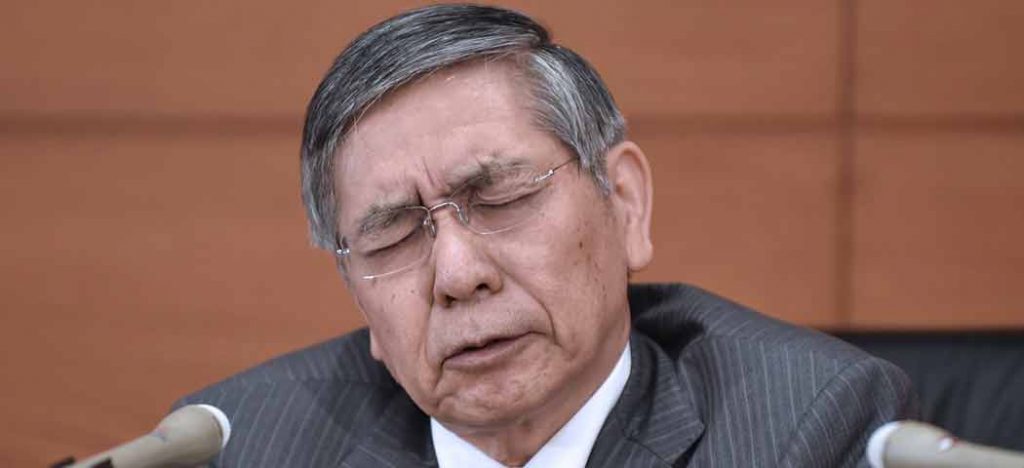
After waking up on Thursday, we quickly glanced at the overnight market action in Asia and noticed that the Nikkei had tanked rather noticeably. Our first thought upon seeing this was “must be the yen” – and so it was. The BoJ cannot manipulate the yen anymore. - Click to enlarge
We actually fear that Kuroda’s remark about the illegality of direct government financing by the central bank may be a hint to the government that it is time to change the law. After all, in the course of the BoJ’s application of various post-bubble ministrations over the past 26 years, many of the rules that previously restricted its actions have been thrown overboard.
For instance, since 1999 all rules imposing limits on government bond purchases by the BoJ have been gradually repealed. In other words, a few years ago, “QQE” would have been illegal as well. Obviously, such obstacles can be easily circumvented.
.
Conclusion
The BoJ’s inaction on Thursday is probably bound to be a strictly temporary affair. This thought is actually quite worrisome considering what it is already doing (for a detailed list of its existing programs, see the policy statement it published last week).
Until then, the yen seems likely to continue to rise, although it is beginning to look a bit overbought in the short term after last week’s big jump.
Addendum: Bedeviled
Nikkei Index daily – did they have to close it right there?A friend has pointed a curiosity out to us – the Nikkei Index is the third major market to have been struck by a touch of devilry in recent years. It actually closed precisely at 16,666.05 last week (both the S&P 500 Index and the gold market have previously run into analogous numerological hicc-ups – see here for the details). |
Charts by: BarChart, St. Louis Federal Reserve Research, TradingEconomics, StockCharts
Full story here Are you the author? Previous post See more for Next post
Tags: central banks,Chart Update,Helicopter Money,newslettersent










